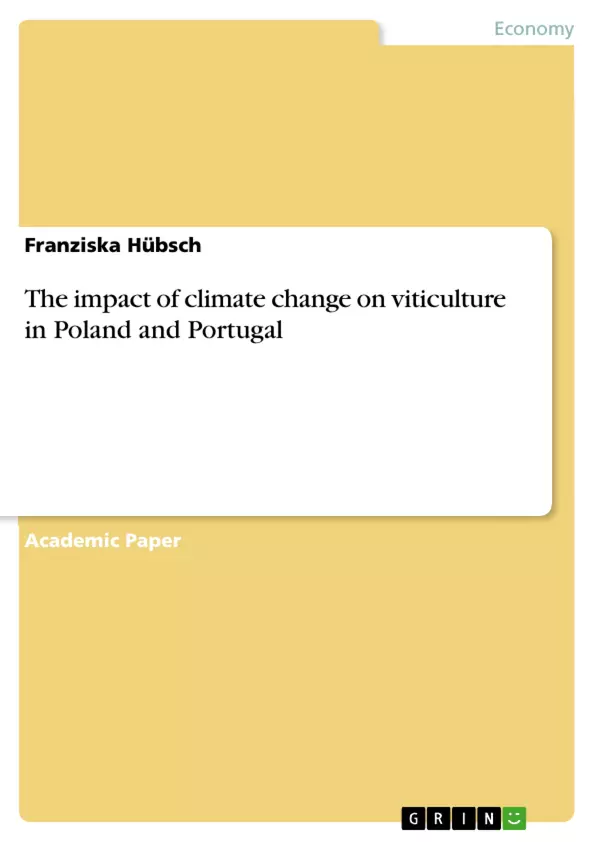This work will have a closer look at the cool-climate country Poland and the warm-climate country Portugal. The working assumption is, that the winemaking sector in cool-climate countries benefits from global warming effects, whereas warm-climate countries have to face major negative impacts and do have a higher urgency for adaption measures.
Climate change is omnipresent. Its impacts on ecological, economic and social dimensions are significant. Also, in viticulture climate change has a major impact and affects the winemaker’s practice both in the short-term and in the long-term. Nowadays, the wine-growing area in Europe is mainly situated at a latitude between 30° and 50°N (northern hemisphere). Climate change, specifically global warming, affects those boundaries and challenges the current viticulture as well as traditional pathways. The impact of climate change will not take course in a homogenous way. The wine-growing regions are affected differently, partly with more positive or more negative outcome.
Inhaltsverzeichnis (Table of Contents)
- Introduction
- Review of the Literature
- Definition and Causes of Climate Change
- Climate Change Impact on Viticulture
- Poland
- Wine Industry
- Viticulture
- Portugal
- Wine Industry
- Viticulture
- Discussion
Zielsetzung und Themenschwerpunkte (Objectives and Key Themes)
This work explores the impact of climate change on viticulture in Poland and Portugal, examining how the winemaking sector in these two countries is affected by global warming. The main focus is on understanding how the specific climatic conditions of each country, with Poland being a cool-climate region and Portugal a warm-climate region, influence their respective viticulture sectors.
- The definition and causes of climate change, specifically global warming.
- The impact of climate change on the viticulture sector in Poland and Portugal.
- The potential benefits and challenges of global warming for winemaking in cool-climate regions like Poland.
- The negative impacts of climate change on viticulture in warm-climate regions like Portugal, as well as the need for adaption measures.
- The differences in how the wine-growing regions of Poland and Portugal are affected by climate change.
Zusammenfassung der Kapitel (Chapter Summaries)
- Introduction: This chapter provides an overview of the impact of climate change on viticulture and sets the stage for examining the specific cases of Poland and Portugal.
- Review of the Literature: This chapter delves into the definition and causes of climate change, particularly global warming. It then explores the impact of climate change on viticulture in both Poland and Portugal, analyzing the specific conditions and challenges faced by each country. This section focuses on the wine industry and viticulture practices within each region.
Schlüsselwörter (Keywords)
Climate change, global warming, viticulture, winemaking, Poland, Portugal, cool-climate, warm-climate, wine industry, adaption measures, impact analysis.
- Citar trabajo
- Franziska Hübsch (Autor), 2020, The impact of climate change on viticulture in Poland and Portugal, Múnich, GRIN Verlag, https://www.grin.com/document/1004589



